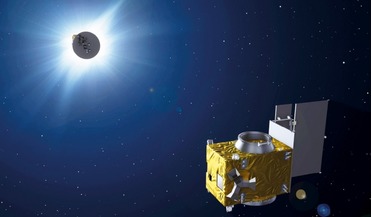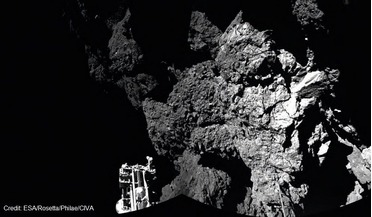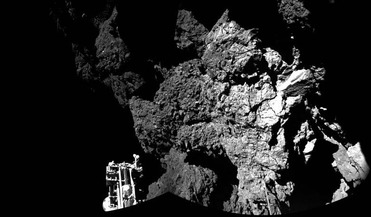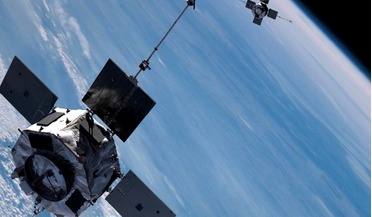 January 2019
Engineering six-hour solar eclipses with formation flying
January 2019
Engineering six-hour solar eclipses with formation flying
... when deployed, outside the penumbra created by the other satellite in coronagraph operations. During launch, the deployable solar panel is stowed against the rigid support structure.The CSC is responsible for performing the main orbital maintenance...
 June 2015
The day Philae landed: how a rough touchdown still made history at the Rosetta Mission
June 2015
The day Philae landed: how a rough touchdown still made history at the Rosetta Mission
... obtained during the on-comet operations, in particular power and communication data, provided further clues. From the solar panels the time of sunrise and sunset could be derived, which relates to a certain area on the comet. Superimposing all...
 15 November 2014
Pioneering Philae completes main mission before hibernation
15 November 2014
Pioneering Philae completes main mission before hibernation
...contact will be possible unless sufficient sunlight falls on the solar panels to generate enough power to wake it up. The possibility ... However, given the low recharge current coming from the solar panels at this time, it is unlikely that contact will...
 November 2018
BepiColombo – a mission to explore Mercury
November 2018
BepiColombo – a mission to explore Mercury
... orbit is one Earth year (about four Mercury years, or two Mercury solar days) and, if needed, a mission extension by another Earth year is optional. Solar panel on the BepiColombo Mercury Transfer Module (MTM) during final inspections and deployment...
 October 2019
Electric orbit raising and space weather
October 2019
Electric orbit raising and space weather
... 1991 event can be evaluated in terms of the associated radiation damage and solar cell degradation. Figure 2. Degradation of EOR-1’s solar panels (blue) increased from ~3% in a quiet environment to ~8% in an active environment. In the case of EOR...
 03 August 2015
From SpaceX to SolarCity: how space sector innovation affects sustainability on Earth
03 August 2015
From SpaceX to SolarCity: how space sector innovation affects sustainability on Earth
... efficient assembly and progressive financing techniques, have made SolarCity a potential trigger for mass adoption of the solar panel in the United States. Considering the scientific community’s growing concerns about climate change and the need...